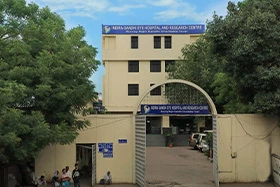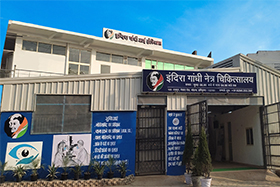- Applanation tonometry
- Gonioscopy
- HFA – Humphery Field Analyser (Zeiss)
- OCT- Optical Coherence Tomography (Zeiss)
- Fundus photography (Zeiss)
- ASOCT – Anterior segment Optical Coherence Tomography (Zeiss)
- Email: enquiry@indiragandhieyehospital.com
- Call: 01242710271
Specialties
Glaucoma
Early diagnosis and treatment aimed at reducing pressure inside the eye can save your vision. Each Indira Gandhi Eye Hospital and Research Centre has a modern Glaucoma unit that is equipped with state-of-the-art technology and offers a range of treatments that are best in class in northern India. A team of experienced nationally and internationally acclaimed surgeons who are experts in the treatment of all kinds of Glaucoma ensure a high success rate. Patients of all ages, from new-borns to the elderly, are treated and can be confident of receiving the best possible care related to Glaucoma. We also operate a training centre where many ophthalmologists have been trained in glaucoma diagnostic and management.
_11zon.webp)
Technical set up
- Specular Microscopy
- Biometry
- Digital Photography
- Nd-YAG laser
- Laser suture Lysis
- Diode CPC – Cyclophotocoagulation
Treatment
- Antiglaucoma medications
- Laser Procedures
- Surgical Proceduress
Surgical services
- Trabeculectomy with or without Mitomycin C or 5-FU
- Combined Trabeculectomy with IOL implantation (Phaco/Manual Phaco)
- Trabeculotomy + Trabeculectomy
- Glaucoma drainage Devices – Valve/Tube implants
- Minimal invasive glaucoma surgery
- Bleb Needling
- Bleb Repair/Revision
- Laser Iridotomy
- Laser Suture Lysis
- Laser Hyaloidotomy
- Laser Vitreolysis
- Diode laser Cyclophotocoagulation
- Cyclocryo




